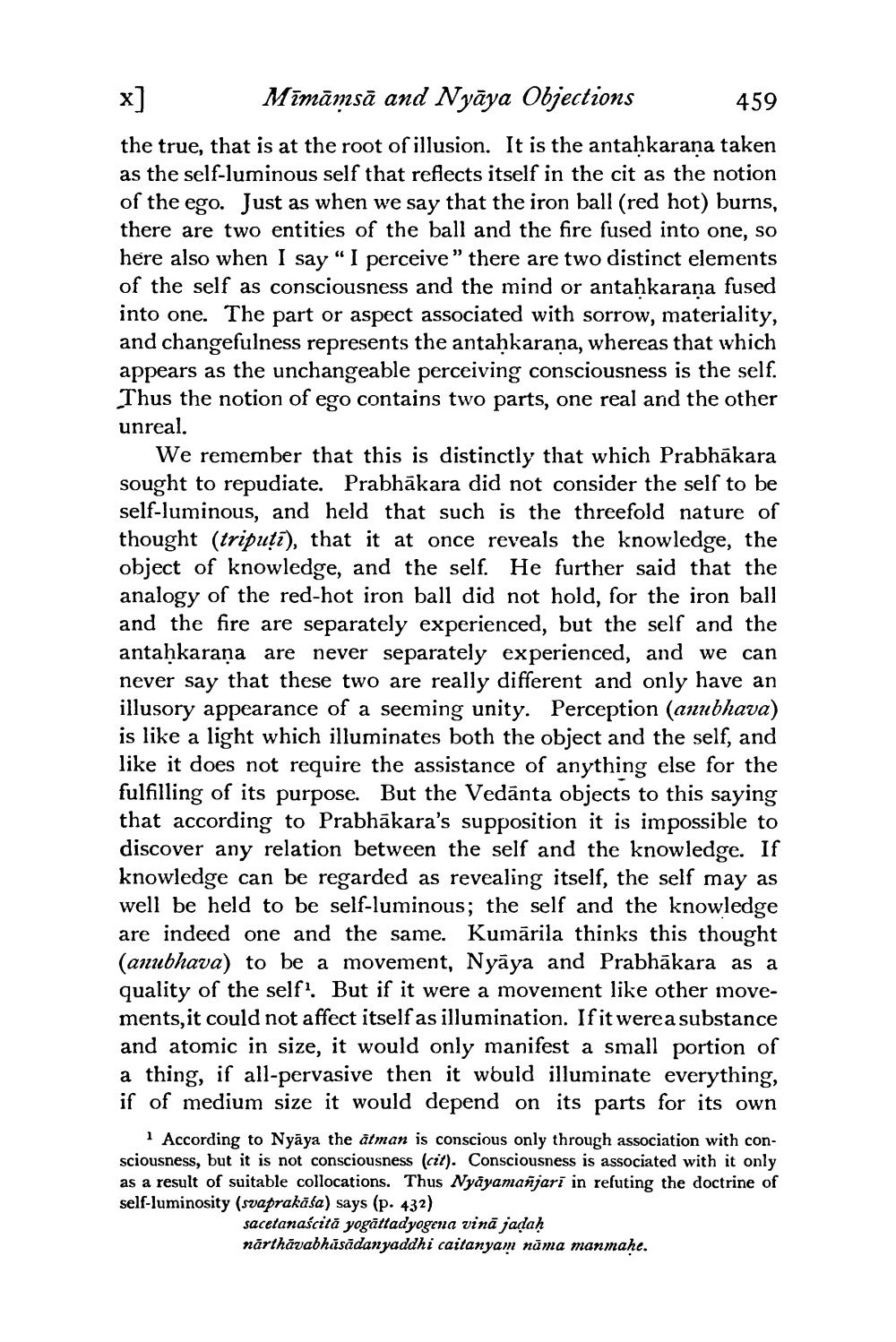________________
Mīmāmsā and Nyāya Objections
459
the true, that is at the root of illusion. It is the antahkarana taken as the self-luminous self that reflects itself in the cit as the notion of the ego. Just as when we say that the iron ball (red hot) burns, there are two entities of the ball and the fire fused into one, so here also when I say "I perceive" there are two distinct elements of the self as consciousness and the mind or antahkarana fused into one. The part or aspect associated with sorrow, materiality, and changefulness represents the antahkarana, whereas that which appears as the unchangeable perceiving consciousness is the self. Thus the notion of ego contains two parts, one real and the other unreal.
We remember that this is distinctly that which Prabhākara sought to repudiate. Prabhākara did not consider the self to be self-luminous, and held that such is the threefold nature of thought (tripuțī), that it at once reveals the knowledge, the object of knowledge, and the self. He further said that the analogy of the red-hot iron ball did not hold, for the iron ball and the fire are separately experienced, but the self and the antahkarana are never separately experienced, and we can never say that these two are really different and only have an illusory appearance of a seeming unity. Perception (anubhava) is like a light which illuminates both the object and the self, and like it does not require the assistance of anything else for the fulfilling of its purpose. But the Vedānta objects to this saying that according to Prabhākara's supposition it is impossible to discover any relation between the self and the knowledge. If knowledge can be regarded as revealing itself, the self may as well be held to be self-luminous; the self and the knowledge are indeed one and the same. Kumārila thinks this thought (anubhava) to be a movement, Nyāya and Prabhākara as a quality of the selfı. But if it were a moveinent like other movements, it could not affect itself as illumination. If it werea substance and atomic in size, it would only manifest a small portion of a thing, if all-pervasive then it would illuminate everything, if of medium size it would depend on its parts for its own
According to Nyāya the atman is conscious only through association with consciousness, but it is not consciousness (cit). Consciousness is associated with it only as a result of suitable collocations. Thus Nyāyamañjari in reluting the doctrine of self-luminosity (svaprakāša) says (p. 432)
sacetanaścitā yogāttadyogena vinā jadah nărthāvabhāsādanyaddhi caitanyam nūma manmahe.




